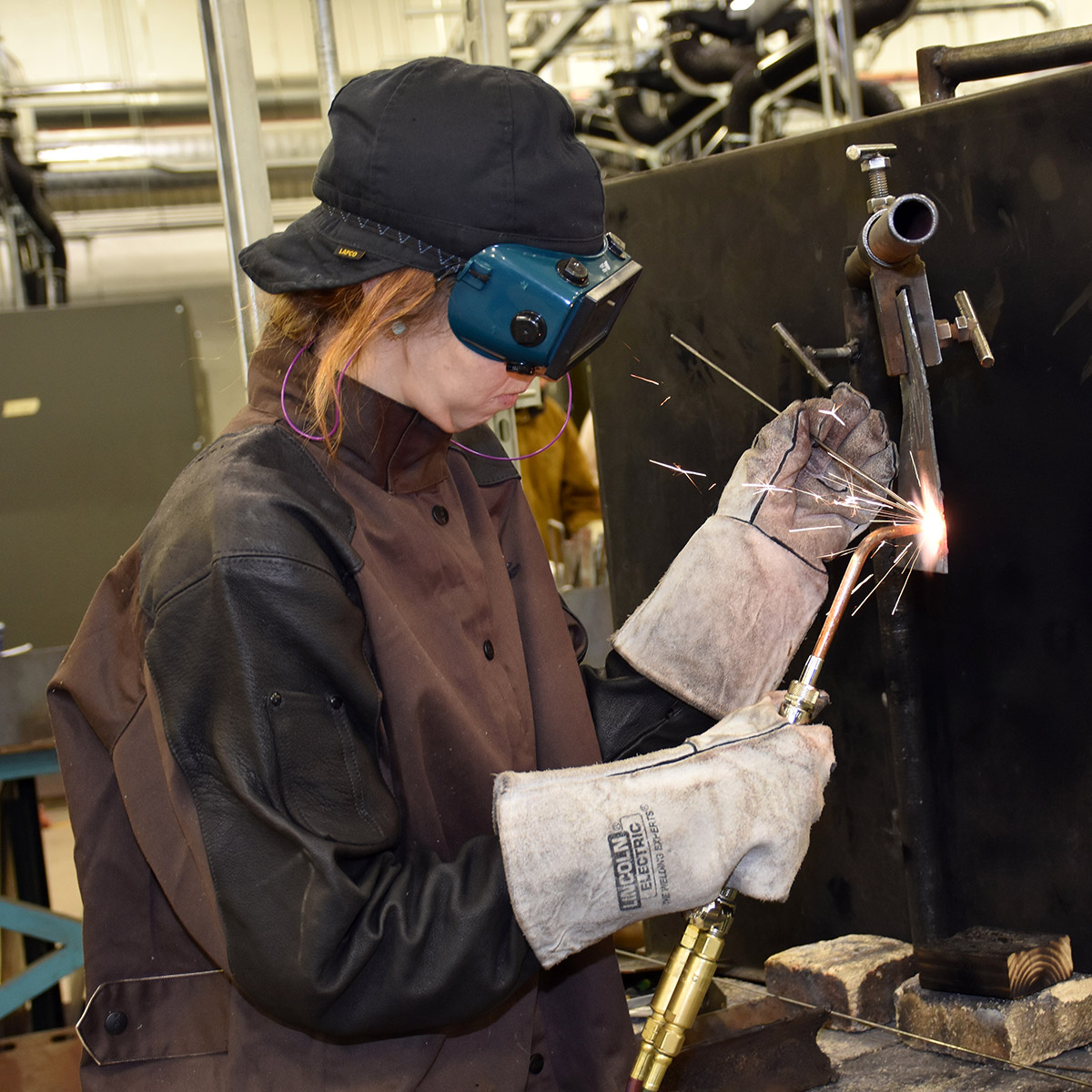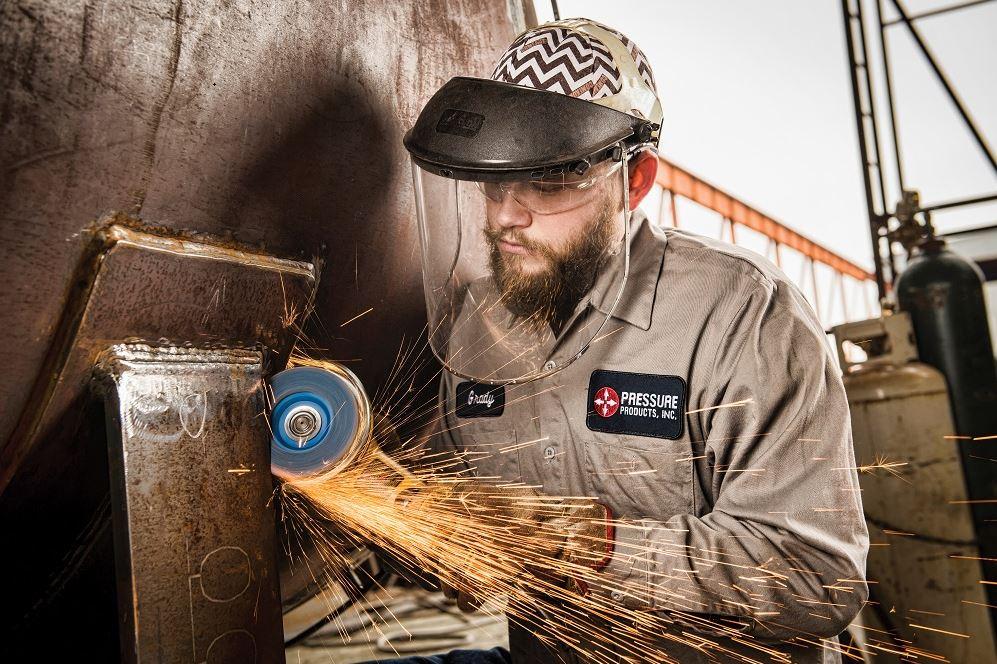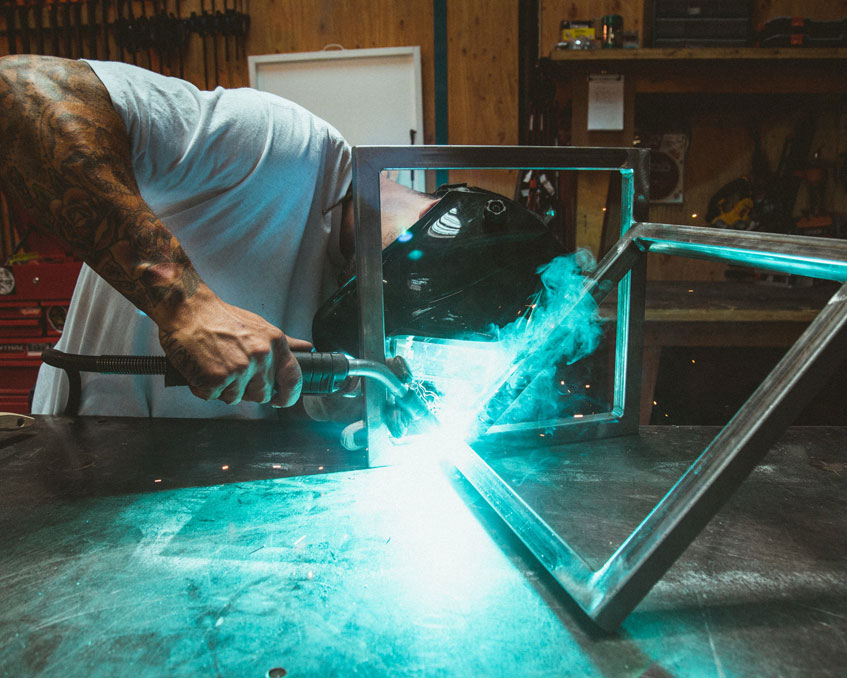Usual Welding Repair Issues and Exactly How to Address Them Properly
Welding repairs typically come across a range of concerns that can jeopardize the honesty of the end product. Common troubles include poor penetration, porosity, and misalignment, among others. Each issue offers special obstacles that require details strategies for resolution. Recognizing these concerns is necessary for welders intending to enhance their skills and end results. This discussion will certainly check out these common welding repair work concerns and effective methods to resolve them.
Poor Penetration
Insufficient infiltration takes place when the weld steel stops working to completely fuse with the base product, leading to weak joints and prospective structural failings. This problem typically originates from not enough heat input, incorrect electrode angle, or improper welding speed. Welders may experience insufficient penetration as a result of a mistake of the required parameters for a details product thickness or kind. In addition, contamination on the base product's surface area can prevent reliable bonding, intensifying the issue. To deal with insufficient penetration, welders must assure ideal setups on their devices and keep a clean work surface area. Routine examination of welds is advised to determine any kind of deficiencies early, enabling for timely adjustments and the avoidance of endangered structural stability in welded assemblies.
Porosity
Porosity is a typical issue in welded joints that manifests as tiny gas bubbles caught within the weld metal. This problem can endanger the stability of the weld, bring about minimized stamina and potential failure under tension. Belgrade. Porosity normally emerges from contamination, dampness, or inappropriate welding strategies, which permit gases to leave right into the molten weld pool. To resolve porosity, welders ought to assure proper surface prep work, preserve a tidy workplace, and utilize appropriate welding specifications. Furthermore, choosing the best filler product and securing gas can mitigate gas entrapment. Normal inspection and testing of welds can assist recognize porosity early, ensuring timely corrective activities are taken, thus maintaining the high quality and integrity of the bonded structure
Imbalance
Misalignment in welding can develop from numerous aspects, including inappropriate configuration and thermal expansion. Recognizing the source is important for reliable resolution. A number of correction methods are readily available to realign parts and guarantee architectural integrity.
Sources of Imbalance
Welding imbalance typically stems from a variety of underlying issues that can compromise structural honesty. One key cause is inappropriate fit-up of components prior to welding, which can result in gaps and uneven surface areas. Variations in thermal growth during the welding process can additionally result in distortion, specifically if the products being joined have different coefficients of development. Furthermore, inadequate securing and fixturing might fall short to hold elements firmly in position, bring about activity during welding. Inadequately kept equipment, consisting of welding machines and tools, might present variances in the weld grain, further adding to misalignment. Driver mistake, stemming from inadequate training or experience, can likewise play a considerable function in developing misaligned welds.

Adjustment Techniques Offered
Resolving misalignment properly requires a mix of restorative methods tailored to the specific problems available. One typical approach is the use of fixtures or jigs to hold parts in the appropriate position during welding, making certain regular placement. In addition, preheating the products can help lower distortion and enhance fit-up. For considerable misalignment, mechanical adjustment methods, such as using hydraulic jacks or clamps, can be employed to fix the placement prior to welding. Post-weld warmth treatment might also be needed to soothe stress and anxieties triggered by imbalance. Ultimately, mindful inspection and adjustment throughout the arrangement stage can stop misalignment issues from coming to be considerable problems, advertising a smoother welding process and enhancing general structural stability.
Distortion
Distortion is an usual obstacle in welding that can arise from numerous elements, including irregular heating & cooling. Understanding the reasons for distortion is necessary for executing effective prevention techniques. Addressing this issue not only boosts structural stability yet likewise enhances the total quality of the weld.
Reasons for Distortion
When based on the intense warm of welding, products commonly go through modifications that can cause distortion. This phenomenon mostly occurs from thermal development and contraction during the welding procedure. As the weld area warms up, the product broadens; upon air conditioning, it contracts, which can produce internal tensions. On top of that, irregular home heating throughout a work surface can intensify these stress and anxieties, resulting in warping or bending. The kind of product additionally plays a significant role; metals with varying thermal conductivity and coefficients of expansion might respond in a different way, bring about uncertain distortions. Inadequate joint layout and inadequate fixturing can contribute to imbalance throughout welding, boosting the probability of distortion. Understanding these reasons is essential for effective welding fixing and prevention methods.
Prevention Techniques
Effective prevention techniques for distortion throughout welding concentrate on regulating warmth input and making sure proper joint style. Keeping a constant heat input aids to lessen thermal expansion and contraction, which can lead to distortion. Using methods such website link as preheating the workpiece can also lower the temperature slope, promoting uniform home heating. Furthermore, selecting ideal joint styles, such as T-joints or lap joints, can improve security and decrease anxiety concentrations. Executing proper fixturing to secure the work surfaces in place better aids in preserving placement during the welding process. Lastly, staggered welding series can distribute warmth more uniformly, preventing local distortion. By using these approaches, welders can substantially lower the possibility of distortion and boost the overall high quality of their welds.
Fracturing
Fracturing is a common problem run into in welding repairs, often arising from various elements such as incorrect cooling prices, product selection, or insufficient joint prep work. The incident of splits can significantly compromise the stability of the weld, bring about potential failures during procedure. To resolve this concern, welders have to initially assess the source, guaranteeing that products work and appropriately picked for the specific application. Furthermore, controlling the cooling rate throughout the welding procedure is vital; quick cooling can cause tension and result in fracturing. Appropriate joint style and preparation likewise contribute to reducing the risk. Carrying out these methods can boost weld top quality and durability, inevitably lowering the likelihood of fracturing in ended up weldments.

Incomplete Blend
A considerable problem in welding repairs is incomplete fusion, which takes place when the weld metal does not effectively bond with the base material or previous weld passes - Belgrade Welding. This issue can result in weaknesses in the joint, potentially jeopardizing the honesty of the bonded structure. Aspects contributing to incomplete blend include not enough heat input, incorrect welding technique, and contamination of the surfaces being signed up with. To resolve this concern properly, welders should ensure appropriate pre-weld cleansing and surface area preparation, as well as change their welding parameters to accomplish sufficient infiltration and combination. Routine assessment during the welding procedure can additionally help determine insufficient blend early, permitting for prompt corrective procedures to boost the total top quality of the weld
Overheating
While welding repair work can improve architectural honesty, overheating provides a considerable obstacle that can bring about material destruction. Extreme warmth throughout welding can alter the mechanical buildings of steels, causing decreased stamina, increased brittleness, and warping. This sensation is especially important in high-stress applications where architectural integrity is vital. Determining overheating can involve aesthetic inspections for discoloration or distortion, in addition to keeping track of temperature throughout the welding procedure. To use this link mitigate the threats related to getting too hot, welders must use proper methods, such as managing warm input, adjusting travel speed, and making use of ideal filler products. Additionally, carrying out pre- and post-weld warmth therapies can assist recover material residential or commercial properties and enhance the total quality of the repair, guaranteeing long-term efficiency and safety and security.
Frequently Asked Questions
What Are the Typical Signs of a Welding Defect?

How Can I Examine My Welds for Top quality?
To evaluate welds for top quality, one can utilize visual assessments, ultrasonic screening, and radiographic approaches. Each strategy ensures architectural integrity, determines flaws, and validates adherence to defined criteria, eventually enhancing the reliability of the bonded joints.
What Safety and security Preventative Measures Should I Take While Welding?
When welding, one must prioritize safety by using proper individual protective devices, ensuring appropriate air flow, safeguarding combustible products away, preserving a clean workspace, and being conscious of environments to stop injuries and mishaps.
Can I Repair a Weld Without Remodeling the Entire Joint?
Repairing a weld without redesigning the entire joint is feasible, relying on the damage (Montana Mobile Welding and Repair Belgrade Fabrication). Techniques such as grinding, adding filler material, or utilizing a welding procedure can effectively resolve particular defects while preserving the surrounding framework
What Devices Are Essential for Reliable Welding Services?
Necessary tools for efficient welding repair services consist of a welding machine, cord brush, grinder, protective gear, clamps, and filler products. Each device plays a crucial function in making sure quality and security throughout the fixing process. Porosity generally arises from contamination, dampness, or inappropriate welding strategies, which enable gases to run away into the liquified weld pool. Badly maintained devices, including welding equipments and tools, might present disparities in the weld grain, more contributing to imbalance. When subjected to the intense heat of welding, products frequently undergo modifications that can lead to distortion. Breaking is a typical concern experienced in welding repair work, usually resulting from different variables such as inappropriate cooling rates, material selection, or inadequate joint prep work. A considerable problem in welding repair work is insufficient fusion, which takes place when the weld metal does not properly bond with the base material or previous weld passes.
Comments on “Can you spot signs of incomplete fusion? Montana Mobile Welding and Repair explains how to detect them”